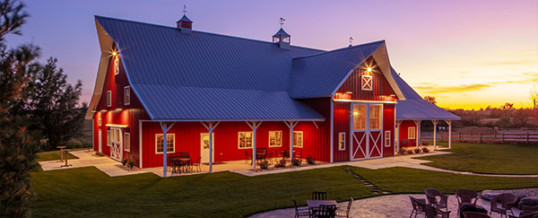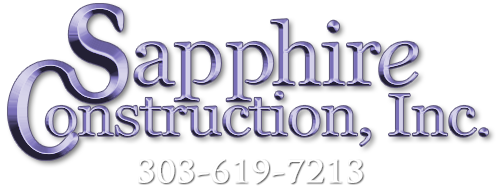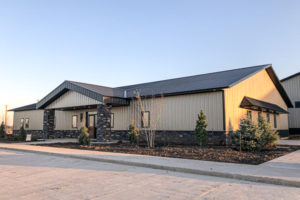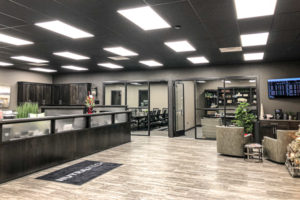
Effects of Colors and Textures on Pole Buildings
Choices for exterior colors for new pole buildings usually reflect the personality of the owner. Do they have guidance? Most buyers come with a sense of how they would like their buildings to either stand out from or blend into the surroundings. And they are welcome to play around with our electronic design mockups.
Architectural and design schools teach about laws governing colors. Complementary colors, contrasting colors, subtle colorations, and how textures and reflective surfaces also make their own statements. These natural laws are more like observations. They help guide building design by encouraging harmonious lines and parallel design elements that move the eye across the building palette. It’s a science as well as an art.
So, before our potential clients feel overwhelmed with the task of choosing colors and textures, we’ll give you some basic information to get you into the ballpark where you’d like to be. Also, for more inspiration, see Lesterbuildings.com photo gallery and the blog “Selecting the Best Color Combination for Your Pole Building.”
Effects of Color
The rule of thumb with color guides us to major and minor colors. Select two neutrals and two pop colors for interior design. If we start there, we see how the most popular pole barn choices fall into the realm of two or three tones. For example, one color goes on the sidewalls, one for the roof (which is large and does make a statement), and then the trim. Trim may also match the roof.
Other clients choose a one-color theme and others a souped-up, four-color option. Four colors work well for buildings featuring extra design elements such as overhead doors, walk-in doors, cupolas, and mansards. The extra color helps build accents and increases aesthetics.
Textures and Dimension
Many materials act as texture. Siding adds a stripe. Adobe and plaster can appear as dots or swirls. Wood adds texture. Shellac and shiny finishes add smooth texture as windows reflect the light or landscape or another surface. And, just as a plaid shirt or a herringbone upholstery act as change-up agents, brick and stone form their own color textures. Think of the little curved wood additions to a Victorian building or the modern Western look with T boards placed between two eaves.
Oftentimes large buildings can benefit from the addition of one or two of these elements. They soften the edifice and make the building more welcoming. Even an awning or porch nicely divides a 40-foot wall. Now we’re talking about adding more dimension.
Landscaping and Settings
Let’s also consider the setting. It is your canvas. Is the background flat, a mountain, trees, or will you landscape? The answers to this question could very well guide you to neutral or contrasting colors that either make the building blend in or stand out. Really, these are individual choices and that’s what makes this creative process so much fun.
Builders – Pole Buildings in Colorado
Contact Sapphire Construction, Inc. in Castle Rock, Colorado at (303) 619-7213. Our professionals love to share the exciting options for Colorado pole buildings and metal buildings to fit your needs. Do you need a new building for Horses, Storage, Hobbies, Farm & Ranch, or Commercial needs? You’ve come to the right place.
Sapphire Construction, Inc. custom designs each pole building kit using high-quality, engineer-tested materials from Lester Buildings. Professional designers work with our clients to pinpoint the best design choices.
APR
2021



About the Author:
Allen Randa is a second generation Master Carpenter and Owner of Sapphire Construction Inc. Allen personally manages each project from beginning to end. That includes the first meeting, the estimate, the contract and architectural designs.